Presentation
Left loin pain and hematuria.
Patient Data


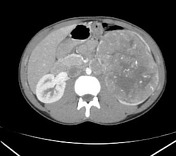

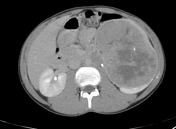

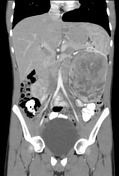



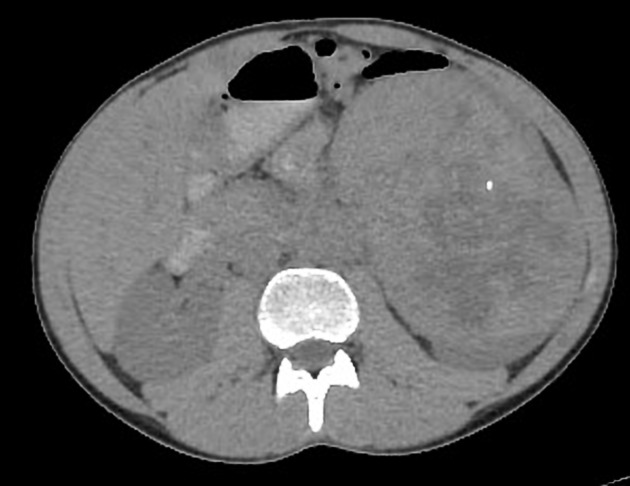
Left renal lower zonal large exophytic soft tissue mass lesion. The mass appears heterogeneous with internal cystic areas of breaking down and heterogeneous post-contrast enhancement as well as mural and septal calcifications.
This is associated with multiple enlarged left renal hilum and left para-aortic enlarged lymph nodes.
The patient went on to have left nephrectomy and regional nodal resection.
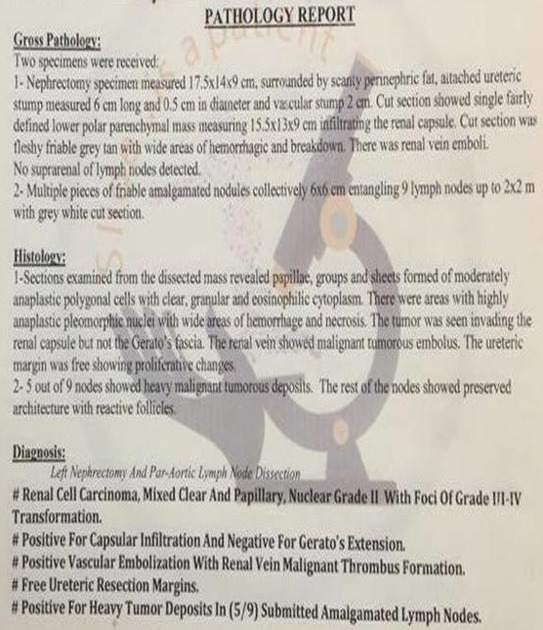
Pathology proved renal cell carcinoma, mixed clear and papillary, nuclear grade II with III-IV transformation.
Positive for capsular infiltration and negative for Gerato's extension.
Positive for vascular embolization with renal vein malignant thrombus.
Free ureteric resection margins.
Positive for heavy tumor deposits in lymph nodes.
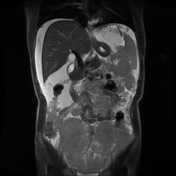

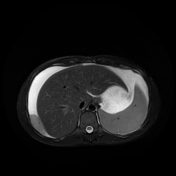

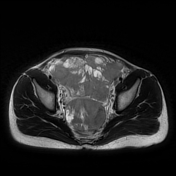

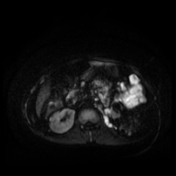

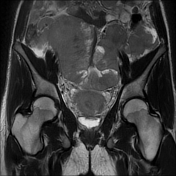

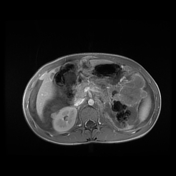

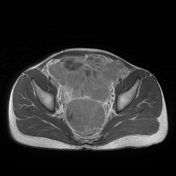

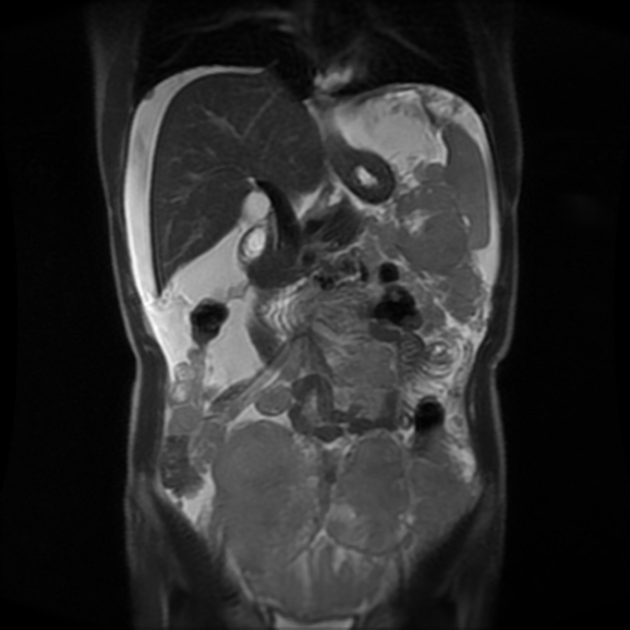
Left nephrectomy and regional nodal resection.
Multiple metastatic variable-sized peritoneal nodules and masses, the largest seen within the pelvis. The peritoneal masses are scattered along the hepatic and splenic surfaces as well as the serosal surface of the bowel loops.
Moderate abdominal and pelvic ascites.
Case Discussion
The young age of the patient made RCC a less likely possibility, as RCC are much more common in older age groups.
Renal cell carcinomas (RCC), mostly occur in adults aged 60-70 years which are usually caused by cigarette smoking, obesity and hypertension. However, in children and young adults, they have been associated with genetic alterations.




 Unable to process the form. Check for errors and try again.
Unable to process the form. Check for errors and try again.